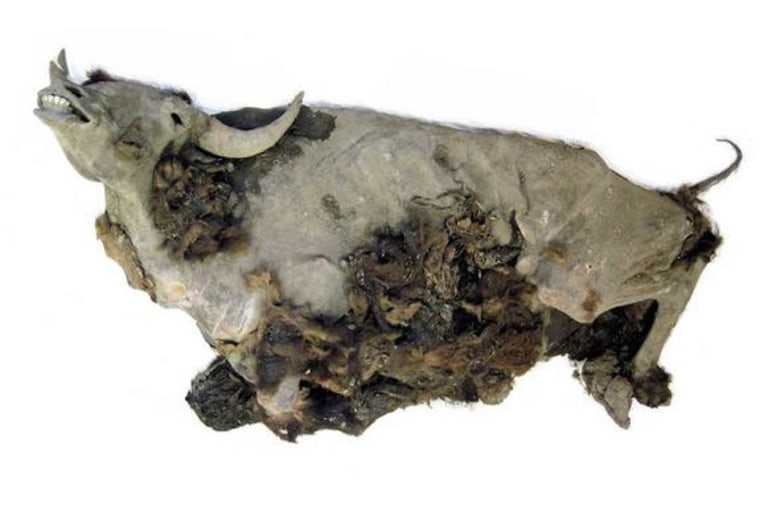Hidden away under frozen ground for nearly 10,000 years, an extremely well-preserved bison mummy is finally ready to give up its secrets.
In 2011, members of the Yukagir tribe in northern Siberia discovered the remains of a steppe bison (Bison priscus), an extinct ancestor of the modern bison that still roam the plains of North America and northern Europe. The almost perfectly preserved bison was transported to the Yakutian Academy of Sciences in Siberia, where researchers made plans to perform an autopsy on the animal.

While other steppe bison mummies have been discovered over the years, none have been as well-preserved as the so-called Yukagir bison mummy, which was found with its internal organs almost completely intact, according to Olga Potapova, the collections curator and manager at the Mammoth Site of Hot Springs in South Dakota, who helped study the ancient mammal. [See more photos of the bison mummy]
"Normally, what you find with the mummies of megafauna in North America or Siberia is partial carcasses. They're partly eaten or destroyed because they're lying in the permafrost for tens of thousands of years," Potapova told Live Science. "But the mummy was preserved so well that it [earned] a record for the level of its preservation."
The researchers think the Yukagir bison died young, at about 4 years old, Potapova said. The lack of fat around the bison's abdomen suggests the animal died of starvation.
But other than that missing layer of fat, the bison was very well-preserved, with its heart, blood vessels and digestive system found relatively in tact, though some of the organs had shrunk significantly, the researchers said. The specimen was so well-preserved that researchers were able to obtain tissue samples from each organ, Potapova said.
The findings were presented at the annual meeting of the Society of Vertebrate Paleontology in Berlin and will be published in the Journal of Vertebrate Paleontology.
— Elizabeth Palermo, Live Science
This is a condensed version of a report from Live Science. Read the full report. Follow Elizabeth Palermo @techEpalermo. Follow Live Science @livescience, Facebook & Google+. Original article on Live Science.